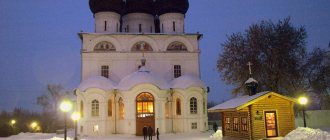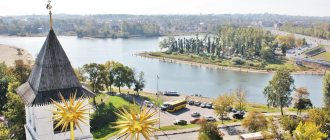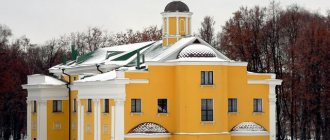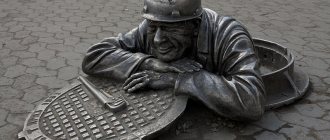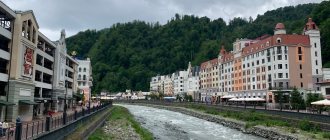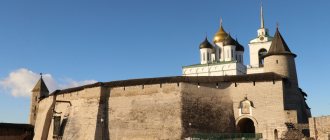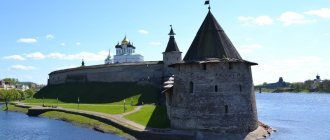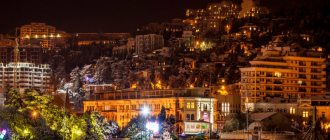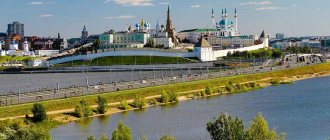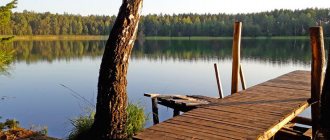The city of Zadonsk in the Lipetsk region attracts tourists from all over Russia. They walk along ancient streets, take photographs against the backdrop of monuments, and visit local shrines. And they are probably interested in what the sights of Trans-Don looked like a hundred, two hundred, five hundred years ago.
If you have come to this page, it means that you are an inquisitive person and are striving to learn more about the center of Orthodox culture. We bring to your attention the history of the glorious city of Zadonsk - from ancient times to the present day.
Teshevka
The city of Zadonsk is located in an area that was inhabited in ancient times. Archaeologists here once discovered several settlements of varying degrees of antiquity. The oldest one arose in the last millennia of the Stone Age.
The steppes of the Upper Don region seemed to have been created for cattle breeding, agriculture, and crafts. However, the Pechenegs and Cumans did not allow the local residents to turn around. The steppes turned into a Wild Field.
The city of Zadonsk arose in 1610, but then it was not a city at all, but a settlement of Teshevka, which had previously been formed at the Bogoroditsky Monastery.
Content:
- Zadonsk temples, churches and monasteries Zadonsk St. Tikhon's Transfiguration Convent
- Cathedral of the Assumption of the Blessed Virgin Mary
- Cathedral of the Presentation of the Icon of the Mother of God of Vladimir
- Church of the Nativity of the Blessed Virgin Mary
- Kudykina mountain
- Beautiful parks in Zadonsk and Zadonsk region
Under Peter
During the time of the reformer emperor, the territory now occupied by the city of Zadonsk served as a source of building materials for the Voronezh shipyard. Residents of the surrounding villages mined ore for railway factories and wove sails. This is where the names of some surrounding villages come from. For example, Parusnoye, which is a few kilometers from the city of Zadonsk.
Peter often visited here while passing through, on his way from Moscow to Voronezh. In 1700, the city of Zadonsk became a postal station. The coachman trade and blacksmithing began to develop, inns arose, and trade in agricultural products expanded.
Mother of God-Tikhonovsky (Tyuninsky) Monastery
The location of this monastery is also associated with the name of Tikhon of Zadonsk, who fell in love with a spring in the wilderness, 3 kilometers from the Zadonsk Monastery. The source was ennobled and equipped by the hands of the saint - it is the main shrine of the women's monastery. In 1814, a house church was built here in honor of the “Life-Giving Spring” icon. The complex of the Tyuninsky Monastery (the name comes from the name of the landowner - the owner of these lands in the 17th century) in addition to this temple includes the majestic Ascension Cathedral, the Church of Alexander Nevsky, a four-tier bell tower, and a pilgrim's house. The monastery is home to 30 sisters, headed by Abbess Arsenia.
Mother of God-Tikhonovsky (Tyuninsky) Monastery
Official website of the Tyunin Monastery: https://tunino.ru.
Catherine's times
City Day of Zadonsk - September 23. In 2022 he will turn 240 years old. However, the birthday of the Orthodox center is not September 23, but the 25th. In 1779, the village was named the city of Zadonskaya. Later the name was shortened to the modern one. Two years later, the first coat of arms was assigned to the settlement.
The architectural appearance began to take shape in the 80s of the 18th century. The most respected residents of the city lived in the Right Bank part, called the Noble part. It is here that the famous Zadonsk monastery is located.
Noble Street (now Karl Marx Street) eventually turned into a kind of Broadway. On weekends, a brass band played here, smart young people from noble families, respectable merchants and minor nobles strolled leisurely.
In another part of the city of Zadonsk, Torgovaya, people lived more modestly. There was a city cathedral, a parish school, a hospital, and many shops with all kinds of goods and products. On fair days, merchants from Yelets, Tula, Serpukhov, and Ryazan came here.
In the city center of Zadonsk there are several restaurants and cafes aimed more at tourists than local residents. One of these establishments, Dorozhnoe, is located where Monastyrskaya Square was once located.
Links[edit]
Notes[edit]
- ^ abcdefgh Law No. 382-OZ
- ^ a b Federal State Statistics Service (2011). “All-Russian Population Census 2010. Volume 1" [All-Russian Population Census 2010, vol. 1]. All-Russian Population Census 2010 [All-Russian Population Census 2010]
. Federal State Statistics Service. - "26. The size of the permanent population of the Russian Federation by municipalities as of January 1, 2022". Federal State Statistics Service. Retrieved January 23, 2022.
- ^ abcd Law No. 126-OZ
- Federal State Statistics Service. Federal Agency for Technological Regulation and Metrology. No. OK 033-2013 January 1, 2014 “All-Russian classifier of municipal territories. Code 42 624". (Federal State Statistics Service. Federal Agency for Technological Regulation and Metrology. No. OK 033-2013 dated January 1, 2014. Russian classification of municipal territories. Code 42 624.
). - "On the Calculation of Time". Official Internet portal of legal information
. June 3, 2011. Retrieved January 19, 2022. - Post office. Information and computing center of OASU RPO. ( Post office
).
Search for postal service objects ( postal Search for objects
) (in Russian) - ↑
Federal State Statistics Service of Russia (May 21, 2004).
“The population of Russia, the constituent entities of the Russian Federation as part of federal districts, urban settlements, settlements, settlements of 3 thousand or more people” [Population of Russia, its federal districts, federal districts, districts, urban settlements, rural settlements - administrative centers and rural settlements with a population of more than 3,000 people] (XLS). All-Russian Population Census 2002
. - “All-Union Population Census of 1989. The current population of union and autonomous republics, autonomous regions and districts, territories, effects, urban settlements and rural district centers” [All-Union Population Census of 1989: current population of union and autonomous republics, Autonomous regions and districts, territories, regions, districts, urban settlements and villages performing the functions of district administrative centers. All-Union Population Census of 1989 [All-Union Population Census of 1989]
.
Institute of Demography of the National Research University: Higher School of Economics [Institute of Demography of the National Research University: Higher School of Economics]. 1989 - via Demoscope Weekly
.
Early 20th century
At the turn of the century, educational institutions began to open in the city of Zadonsk. There were several small enterprises, including a branch of the Yeletsk tobacco factory of Zausailov. The small town had more than twenty drinking establishments (by the way, there are still quite a few pubs here today).
With the onset of spring, the easy passage of the Lida opened up navigation between the Don station of the south-eastern railway and the city. On Sundays and holidays he went to the monastery of St. Tikhon of Zadonsk.
City of Zadonsk, Lipetsk region
Soviet time
The change of power in the city of Zadonsk began quite calmly. Until the end of January 1918, all the old institutions were operating. However, within a few months the first decrees of the Soviet government came into force. Religious institutions were closed. In 1922, representatives of the new government confiscated church property “for the benefit of the starving people of the Volga region.”
It is difficult today to imagine the city of Zadonsk without monasteries and churches. But until 1943 there was not a single church here. Meanwhile, spiritual life, according to the recollections of old-timers, was not completely stopped despite the bans and persecution.
The Great Patriotic War
In November 1941, the Germans approached the Don. The headquarters of the 13th Army, which was located in the city of Zadonsk, made every effort to stop the enemy. After the capture of Yelets, the Nazis could break through towards Voronezh. This did not happen - near the village of Ekaterinovka they met unexpected resistance.
The threat of a German invasion arose again in the summer of 1942. However, by the beginning of July the enemy was driven back 27 km south of Dolgorukov.
The monuments dedicated to the heroes of the war speak volumes about the great contribution of the residents of Zadonsk to the Great Victory. And not only soldiers. One of the monuments in Zadonsk depicts a simple Russian woman, Maria Frolova, who raised twelve sons, nine of whom died at the front or died from wounds.
Revival of temples
Before the Great Patriotic War, those who were convicted in 1929 began to return. One of them is Hierodeacon Victor. After serving his prison term, he returned to the city of Zadonsk and remained here permanently. He was about 65 years old by that time.
Neither age nor camp broke his powerful health. At first, he hired himself to do the hardest work in order to earn a piece of bread. Only after August 1943, when churches began to reopen, did he have the opportunity to return to his previous ministry. Father Victor became the first deacon of the newly opened Assumption Cathedral.
But the persecution of clergy finally stopped only during the years of Perestroika. In 1987, local newspapers wrote about the day of remembrance of St. Tikhon: “This holiday attracts significantly more believers than even Easter.”
The year 1988 remained significant for the entire Russian Orthodox Church. In addition to the widely celebrated centenary of the baptism of Rus', an important event took place in the life of the city of Zadonsk - the restoration of the Vladimir Cathedral began.
Which region did Zadonsk belong to previously?
In 1924, the city was part of the Voronezh district. A few years later, the Zadonsky district was formed, and the former settlement of Teshevka became its center.
In 1937, the city became part of the Oryol region. This continued until 1954, when the Lipetsk region was formed, which today includes the city of Zadonsk.
Excerpt characterizing Zadonsk
On August 24, Davydov’s first partisan detachment was established, and after his detachment others began to be established. The further the campaign progressed, the more the number of these detachments increased. The partisans destroyed the Great Army piece by piece. They picked up those fallen leaves that fell of their own accord from the withered tree - the French army, and sometimes shook this tree. In October, while the French were fleeing to Smolensk, there were hundreds of these parties of various sizes and characters. There were parties that adopted all the techniques of the army, with infantry, artillery, headquarters, and the comforts of life; there were only Cossacks and cavalry; there were small ones, prefabricated ones, on foot and on horseback, there were peasant and landowner ones, unknown to anyone. There was a sexton as the head of the party, who took several hundred prisoners a month. There was the elder Vasilisa, who killed hundreds of French. The last days of October were the height of the partisan war. That first period of this war, during which the partisans, themselves surprised at their audacity, were afraid at every moment of being caught and surrounded by the French and, without unsaddled or almost getting off their horses, hid in the forests, expecting a pursuit at every moment, has already passed. Now this war had already been defined, it became clear to everyone what could be done with the French and what could not be done. Now only those detachment commanders who, with their headquarters, according to the rules, walked away from the French, considered many things impossible. The small partisans, who had long since begun their work and were closely looking out for the French, considered it possible what the leaders of large detachments did not dare to think about. The Cossacks and men who climbed among the French believed that now everything was possible. On October 22, Denisov, who was one of the partisans, was with his party in the midst of partisan passion. In the morning he and his party were on the move. All day long, through the forests adjacent to the high road, he followed a large French transport of cavalry equipment and Russian prisoners, separated from other troops and under strong cover, as was known from spies and prisoners, heading towards Smolensk. This transport was known not only to Denisov and Dolokhov (also a partisan with a small party), who walked close to Denisov, but also to the commanders of large detachments with headquarters: everyone knew about this transport and, as Denisov said, sharpened their teeth on it. Two of these large detachment leaders - one Pole, the other German - almost at the same time sent Denisov an invitation to each join his own detachment in order to attack the transport. “No, bg’at, I’m with a mustache myself,” said Denisov, having read these papers, and wrote to the German that, despite the spiritual desire that he had to serve under the command of such a valiant and famous general, he must deprive himself of this happiness, because he had already entered under the command of a Pole general. He wrote the same thing to the Pole general, notifying him that he had already entered under the command of a German. Having ordered this, Denisov intended, without reporting this to the highest commanders, together with Dolokhov, to attack and take this transport with his own small forces. The transport went on October 22 from the village of Mikulina to the village of Shamsheva. On the left side of the road from Mikulin to Shamshev there were large forests, in some places approaching the road itself, in others a mile or more away from the road. Through these forests all day long, now going deeper into the middle of them, now going to the edge, he rode with Denisov’s party, not letting the moving French out of sight. In the morning, not far from Mikulin, where the forest came close to the road, Cossacks from Denisov’s party captured two French wagons with cavalry saddles that had become dirty in the mud and took them into the forest. From then until the evening, the party, without attacking, followed the movement of the French. It was necessary, without frightening them, to let them calmly reach Shamshev and then, uniting with Dolokhov, who was supposed to arrive in the evening for a meeting at the guardhouse in the forest (a mile from Shamshev), at dawn, fall from both sides out of the blue and beat and take everyone at once. Behind, two miles from Mikulin, where the forest approached the road itself, six Cossacks were left, who were supposed to report as soon as new French columns appeared. Ahead of Shamsheva, in the same way, Dolokhov had to explore the road in order to know at what distance there were still other French troops. One thousand five hundred people were expected to be transported. Denisov had two hundred people, Dolokhov could have had the same number. But superior numbers did not stop Denisov. The only thing he still needed to know was what exactly these troops were; and for this purpose Denisov needed to take a tongue (that is, a man from the enemy column). In the morning attack on the wagons, the matter was done with such haste that the French who were with the wagons were killed and captured alive only by the drummer boy, who was retarded and could not say anything positive about the kind of troops in the column. Denisov considered it dangerous to attack another time, so as not to alarm the entire column, and therefore he sent forward to Shamshevo the peasant Tikhon Shcherbaty, who was with his party, to capture, if possible, at least one of the French advanced quarterers who were there. It was an autumn, warm, rainy day. The sky and horizon were the same color of muddy water. It seemed like fog fell, then suddenly it began to rain heavily. Denisov rode on a thoroughbred, thin horse with toned sides, wearing a cloak and a hat with water flowing from it. He, like his horse, who was squinting his head and pinching his ears, was wincing from the slanting rain and looking ahead anxiously. His face, emaciated and overgrown with a thick, short, black beard, seemed angry. Next to Denisov, also in a burka and papakha, on a well-fed, large bottom, rode a Cossack esaul - an employee of Denisov. Esaul Lovaisky - the third, also in a burka and papakha, was a long, flat, board-like, white-faced, blond man, with narrow light eyes and a calmly smug expression both in his face and in his stance. Although it was impossible to say what was special about the horse and the rider, at the first glance at the esaul and Denisov it was clear that Denisov was both wet and awkward - that Denisov was the man who sat on the horse; whereas, looking at the esaul, it was clear that he was as comfortable and calm as always, and that he was not a man who sat on a horse, but man and horse together were one creature, increased by double strength. A little ahead of them walked a thoroughly wet little peasant conductor, in a gray caftan and a white cap. A little behind, on a thin, thin Kyrgyz horse with a huge tail and mane and with bloody lips, rode a young officer in a blue French overcoat. A hussar rode next to him, carrying behind him on the back of his horse a boy in a tattered French uniform and a blue cap. The boy held the hussar with his hands, red from the cold, moved his bare feet, trying to warm them, and, raising his eyebrows, looked around him in surprise. It was the French drummer taken in the morning. Behind, in threes and fours, along a narrow, muddy and worn-out forest road, came the hussars, then the Cossacks, some in a burka, some in a French overcoat, some with a blanket thrown over their heads. The horses, both red and bay, all seemed black from the rain flowing from them. The horses' necks seemed strangely thin from their wet manes. Steam rose from the horses. And the clothes, and the saddles, and the reins - everything was wet, slimy and soggy, just like the earth and the fallen leaves with which the road was laid. People sat hunched over, trying not to move in order to warm up the water that had spilled onto their bodies, and not to let in the new cold water that was leaking under the seats, knees and behind the necks. In the middle of the stretched out Cossacks, two wagons on French horses and harnessed to Cossack saddles rumbled over stumps and branches and rumbled along the water-filled ruts of the road. Denisov's horse, avoiding a puddle that was on the road, reached to the side and pushed his knee against a tree. - Eh, why not! - Denisov screamed angrily and, baring his teeth, hit the horse three times with a whip, splashing himself and his comrades with mud. Denisov was out of sorts: both because of the rain and because of hunger (no one had eaten anything since the morning), and most importantly because there was still no news from Dolokhov and the person sent to take the tongue had not returned. “There will hardly be another case like today where transport will be attacked. It’s too risky to attack on your own, but if you put it off until another day, one of the big partisans will snatch the booty from under your nose,” thought Denisov, constantly looking ahead, thinking of seeing the expected messenger from Dolokhov. Having arrived at a clearing along which one could see far to the right, Denisov stopped. “Someone is coming,” he said. Esaul looked in the direction indicated by Denisov. - Two people are coming - an officer and a Cossack. “It’s just not supposed to be the lieutenant colonel himself,” said the esaul, who loved to use words unknown to the Cossacks. Those driving, going down the mountain, disappeared from view and a few minutes later appeared again. Ahead, at a tired gallop, driving his whip, rode an officer - disheveled, thoroughly wet and with his trousers billowed above his knees. Behind him, standing in stirrups, a Cossack was trotting. This officer, a very young boy, with a wide, ruddy face and quick, cheerful eyes, galloped up to Denisov and handed him a wet envelope. “From the general,” said the officer, “sorry that it’s not quite dry... Denisov, frowning, took the envelope and began to open it. “They said everything that was dangerous, dangerous,” said the officer, turning to the esaul, while Denisov read the envelope handed to him. “However, Komarov and I,” he pointed to the Cossack, “were prepared.” We have two pistos... What is this? - he asked, seeing the French drummer, - a prisoner? Have you been to battle before? Can I talk to him?
